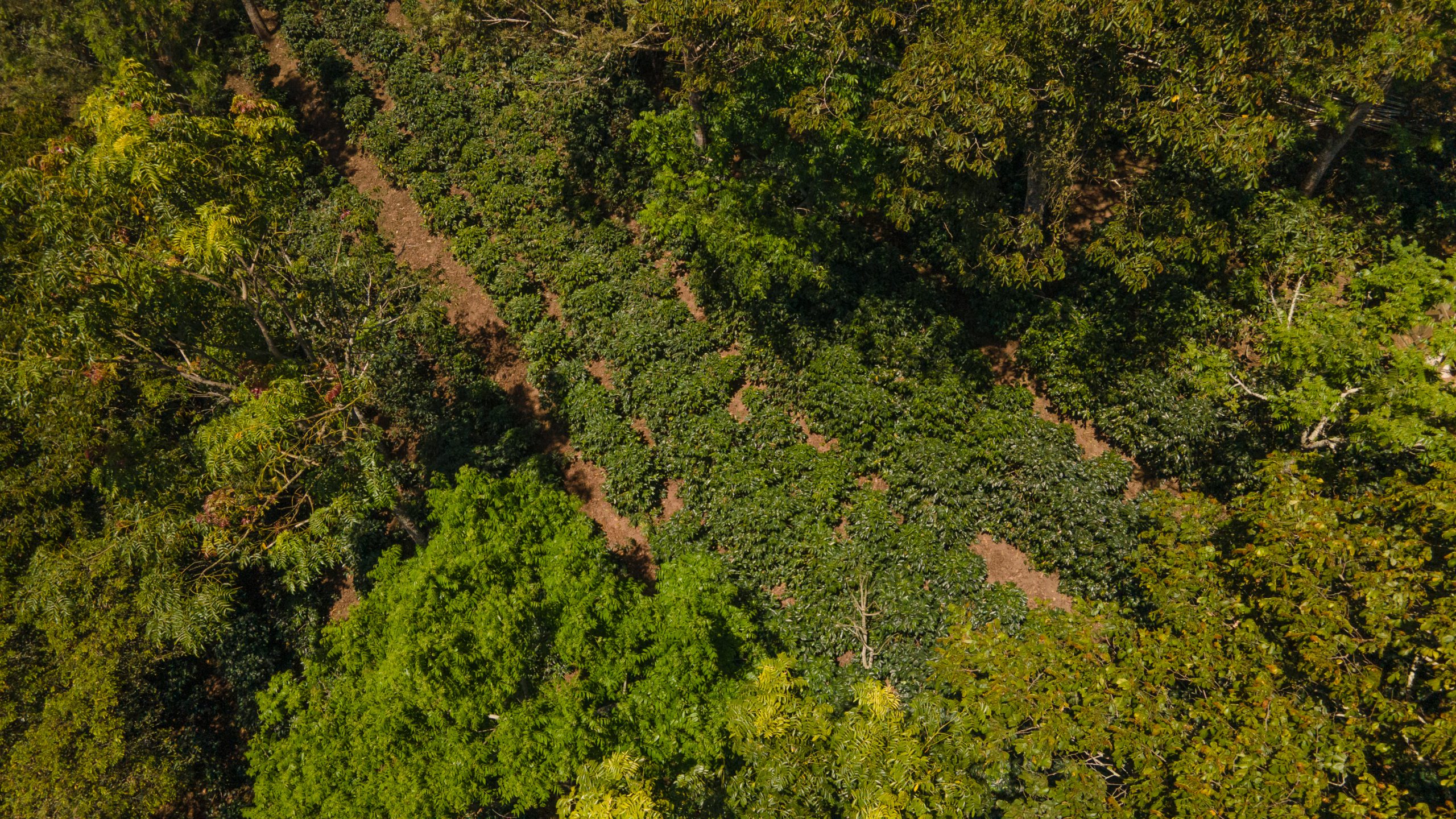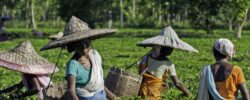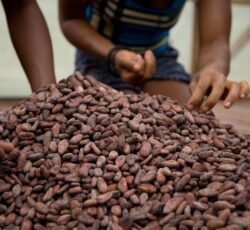3 lessons from pepper producers on engaging farmers in your sustainable mission
What are the different sustainable agricultural models out there, and why is a farmer-centric agroforestry approach our choice over all of them? We give the floor to Hatami Nugraha, CEO of PT CAN, our partner in a new project alongside Verstegen Spices & Sauces, and the exporter behind most of the sustainably labelled Indonesian spices we consume in the Netherlands.
With increased sustainability regulation and food producers in the global south already being pressured by climate change, the subject of regenerative agriculture is gaining momentum. Models aimed at simultaneously generating benefits for people and the planet are rapidly spreading. Yet, when talking about regeneration, and specifically about agroforestry, questions about its scalability quickly arise. What are the examples going beyond the pilot? How long will it be before I can reap the rewards? Will farmers deliver as before?
Hatami Nugraha sees these as the wrong first questions. The CEO of PT Cinquer Agro Nusantara (PT CAN), the exporter behind many of the sustainable Indonesian spices we consume in the Netherlands, has been experimenting with agroforestry since 2018. At the time, he had to import expertise from Brazil to set up the first pilots in the country, which is the second-largest pepper producer in the world. Today, with more widespread knowledge on the topic, new models can focus on environmental benefits, for example, such as improving soil health or biodiversity conservation, while others prioritise business goals, such as increasing crop productivity or generating income.
PT CAN opts for both, but does so through a farmer-centric agroforestry approach that places farmers’ needs and preferences at the centre of the model, with the aim of improving their livelihoods and sustainability. “This approach involves working with farmers to identify their priorities and develop agroforestry models that align with their goals, while also addressing environmental and economic concerns. By prioritising farmer’s needs, we promote long-term adoption of agroforestry practices, while also supporting sustainable land use and conservation goals,” he explains.
A win-win approach won’t thrive easily, of course. It involves working with farmers to develop agroforestry models that align with their goals, which means a lot of dialogue and a longer feedback loop than most companies are used to. “Agroforestry is not a one-size-fits-all solution; its effectiveness depends on several factors, such as the specific context, the type of crops and trees used and, most importantly, the level of support provided to farmers,” he says.
While agroforestry may not be the ultimate solution to all agri-food challenges, it is certainly a valuable and promising approach that deserves further exploration and attention. Check out his 3 pillars to successful models:
1. Building capacity: developing agroforestry system with the farmer
A system that benefits farmers while also working in harmony with nature. Hatami Nugraha explains that the main challenge when designing agroforestry systems is still technical: one of the key considerations in designing agroforestry systems is choosing the right tree species to accompany the primary crop – in his case, the pepper tree.
“Selecting the appropriate tree species can be a challenge for farmers who don’t have experience with introducing new crops – but it’s decisive to enhance the productivity of the primary crop by providing shade, preventing soil erosion, and improving soil fertility. The right trees can also help attract beneficial insects and other wildlife that contribute to pollination and pest control. Meanwhile, they need to stay away from species that compete with the primary crop for nutrients and water.”
This choice will not only benefit the crop, as he explains. Choosing species that require little pruning or fertilisation, for example, can reduce the workload for farmers and increase the likelihood of long-term success. Agroforestry systems should be designed with the farmer’s needs in mind. “Maintenance should be simple and require minimal time and resources, as farmers may have limited availability to work on the field,” he explains. Training implementers and knowledge sharing will shape results. But that requires a collaborative and participatory approach that involves intensive dialogue and support.

To start, it is essential to understand what matters most to the farmers in terms of their economic livelihoods: their needs, priorities, and challenges. From there, one can identify opportunities to incorporate agroforestry practices that can provide tangible benefits to them.
The assessment of farmers’ level of knowledge, skills, and experience with other crops will guide the selection of appropriate agroforestry practices and determine the type and amount of support needed to adopt them. “For example, if the farmers are unfamiliar with agroforestry, we may need to provide them with training, demonstration plots, and technical assistance.”
Creating demonstration plots is an effective way to support farmers in adopting agroforestry practices. This involves establishing a small-scale agroforestry system that showcases the benefits and potential of agroforestry. Farmers can observe and learn from these plots and apply the knowledge and skills gained to their own farms. Which brings us to the next point.
2. Incentives: more work, more metrics, more money
Adequate incentives are often neglected when it comes to farmers adopting agroforestry practices. “The most known is the premium price that farmers can receive for their products when they adopt sustainable agroforestry practices and produce high-quality peppers. The premium rewards farmers for their efforts to adopt and maintain agroforestry practices that benefit the environment and promote sustainable farming,” Hatami explains.
In the case of pepper, the reward is linked to various quality parameters, such as colour, water content, and density. “If farmers can produce pepper that has a consistent white colour, they may be eligible for a premium price. The same if they can produce pepper with a water content of less than 11%. Density is another important quality parameter for pepper, and farmers who can produce peppers with a density above 550 grams per liter may be eligible for a premium price.” The requirements, he explains, also educates producers.
However, ensuring that a premium price is linked to real improvements in the field and to promote transparency and accountability is key to establish clear and transparent criteria for evaluating the sustainability and quality of the products. Again, he calls for farmers’ engagement. “These criteria should be developed through a participatory process that involves farmers and other stakeholders, and should be regularly reviewed and updated based on feedback from the farmers and the market.”
3. The right partners: joint responsibility, greater value
Greater participation isn’t just needed at the farm level. “To ensure the success and growth of an agroforestry project, it is crucial to have a collaborative effort from a diverse range of stakeholders. This includes not only government agencies, research institutions, and agroforestry experts – already broadly involved – but also local communities and business entities such as buyers and investors.”
To take agroforestry beyond the pilots, each stakeholder has a role to play in promoting the adoption of practices and supporting project growth. “Government agencies can provide policy support and financial resources, research institutions can develop innovative solutions and technologies, and agroforestry experts can provide guidance and technical assistance to farmers.” Hatami explains the format, that is the foundation of our project together with Verstegen and the German Government (GIZ): “Business entities must be involved to provide market access and the mentioned incentives for farmers to adopt sustainable practices. But local communities also have a role to play: they can help foster a sense of ownership and empowerment.”
Only by engaging all stakeholders in the project and leveraging their unique strengths and resources, he states, can we create a more resilient and sustainable agroforestry system that benefits both farmers and the environment.


